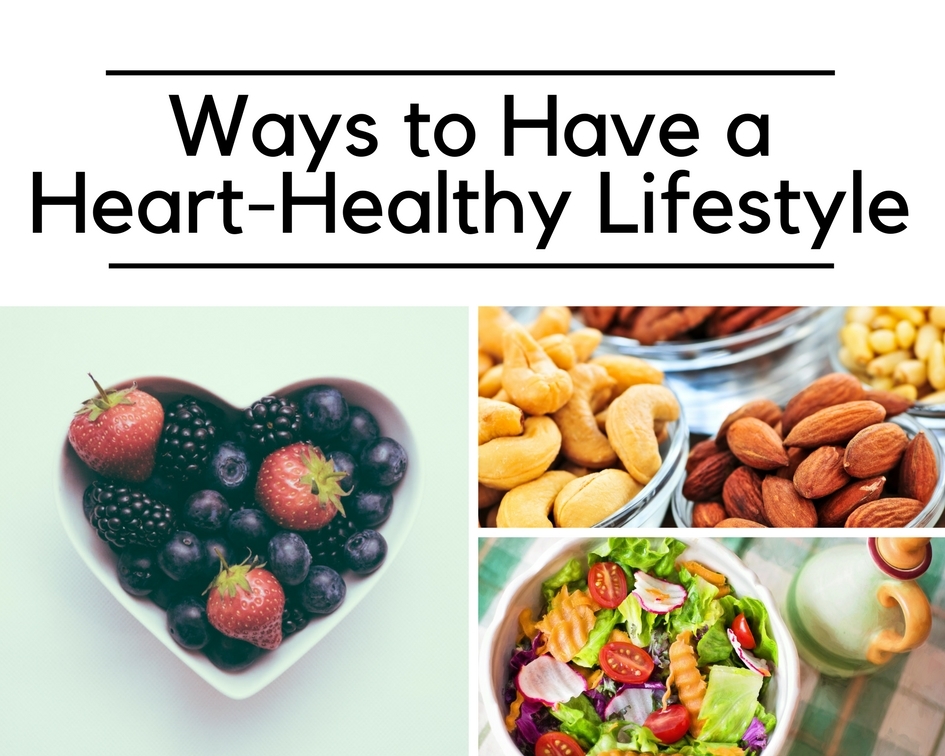According to the Centers for Disease Control and Prevention, heart disease is the leading cause of death for men and women and every year about 735,000 Americans have a heart attack. The numbers are staggering but don’t have to be. There are ways to live a heart-healthy life that can easily be incorporated into your lifestyle.
1. Know how many calories your body needs.
Food labels are based on a 2,000 calorie diet. Depending on your size and what your health goals are, servings may need to be adjusted. Knowing how many calories your body needs is a great way to start a healthy lifestyle journey. These days, there are free apps like MyFitness Pal that will help you calculate what your body needs. They also allow you to track food during the day making sure you don’t have too much of one thing (too many carbs, too little protein, etc).
2. Increase physical activity.
Regular exercise, even as little as 10 minutes a day, can help people lose or maintain weight. According to the American Heart Association, 40 minutes of moderate to vigorous aerobic activity, three to four times a week, will help with cardiovascular fitness.
3. Eat a heart-healthy diet.
For a heart-healthy diet, get nutrient-rich foods into your meals. Healthy fats like raw nuts, flaxseeds and avocados are great. Whether fresh or frozen, add more fruits and vegetables. Skinless chicken, fish, other high-quality protein, and lean meats should be added. Dairy can be included too, just keep it to low-fat products and unsweetened yogurts. When choosing yogurt, it’s best to go with a plain version and add fresh fruit rather than choosing prepackaged fruit yogurt. Typically it is higher in sugar. Plain Greek or Icelandic yogurt are great options because they are high in protein and lower in sugar (just read the labels).
4. Eat less processed foods.
Make sure to limit saturated fat, trans fats and sugar-laden drinks and desserts. Trans fats are found in hydrogenated and deep-fried foods. You’ll find saturated fats in fried and fast food. Processed foods like cheese and bacon are high in salt and other additives – not ideal for a heart-healthy life.
5. Prepare meals at home.
Eating at restaurants is a yummy treat but that’s exactly what it should be, a treat. Making eating out the norm will definitely help put on pounds and shift away from a heart-healthy diet. Reading labels and preparing food at home allows you to control exactly what you’re putting into the meal. If your lifestyle is busy and you’re short on time during the week, meal prep. Taking a few hours out of the day on a weekend to roast chicken, wash greens, chop veggies, etc., will save tons of time during the week. If prepped, a heart-healthy meal can come together quickly.
6. Cook meals healthfully.
Once healthy ingredients are purchased, it’s necessary to make sure to prepare them in a healthful away. The main thing is to avoid deep-frying when preparing foods. A little oil to saute veggies or meat is fine. You do not want to soak foods in oil. Roasting, baking, grilling, or braising are great ways to cook meat. Also, make sure to trim the meat of any extra fat prior to cooking. Steaming vegetables just until soft keep’s them loaded with vitamins and nutrients. Roasting vegetables is also delicious and easy. Just make sure to coat the veggies in a tiny bit of oil. They only need a teaspoon or two of a healthy fat oil (like olive or avocado oil).
